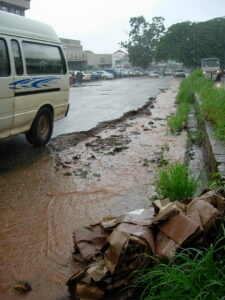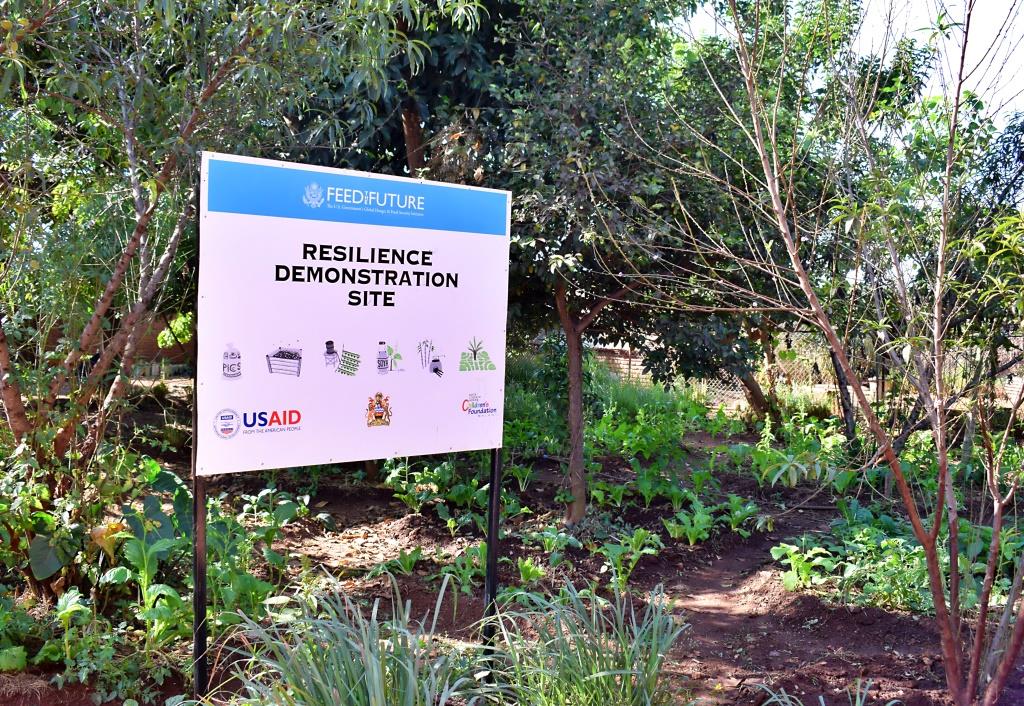This article was written by Stacia and examines some of the issues surrounding food security in Malawi, as well as some of the solutions that Permaculture principles can offer. The food security crisis has become chronic throughout much of Southern Africa. In fact, it has become such an annual event that it is now deemed the “hungry season” by many. This is the time of year when the food reserves from the last growing season run out and the current fields are not yet mature enough for harvesting. Ironically, this happens between November and March in Malawi, which also happens to coincide with our rainy season–in other words, the most agriculturally productive time of the year!
January 2006:
“In New Year messages, East African leaders warn that millions of people in the region face hunger because poor rains have affected vital crops and pasture.”
“In an ironic twist of fate, the drought-ravaged Nsanje district in southern Malawi experienced its worst flooding in almost half a century. At least 2,000 people were displaced as the river Ruo burst its banks to flood six villages…”
“In the northern region, rainfall distribution has been uneven and erratic. There are also reports of a wind storm in Nkhata Bay with people displaced and seeking shelter in churches and schools.”
Once again the news media are reporting about the ‘food’ crisis in Sub-Saharan Africa, this year worse than the other years’ crises, but all the same, another annual crisis. We hear about rationing of food aid, the need for hundreds of metric tones of maize, and the potential for thousands of people to starve. The list of culprits includes drought, floods, poverty, not enough seed and synthetic fertilizer inputs, lack of government action, or the effects of HIV. Unfortunately, this is a pattern that continues year after year, with the exception that each year it gets worse. It seems like our development and relief structures have at least succeeded in creating a sustainable food crisis.
With the chronic pattern of food insecurity in Sub-Saharan Africa, are we really rethinking our strategies toward reversing this trend? Are we learning lessons from these patterns? It doesn’t seem like the majority are. Instead of re-thinking the solutions, programs are continuing with the same activities but just spending more money and time on them – it is like yelling the same message again, but louder, to a person who doesn’t speak your language; it won’t help, you just lose more energy in the process and confuse and possibly irritate the other person. Instead you need to learn the other person’s language.
Much to the glee of industrialized nations’ subsidized farmers who produce too much and need to move it out and to the companies who make synthetic fertilizers, programmes continue to handout food aid, seed, and synthetic fertilizer to address the food crisis and its list of contributing problems. There are thousands of people spending millions of dollars and expending massive amounts of energy and time on the wrong things.
People often blame the Weather
Granted, climates are changing, but the floods and droughts aren’t solely the weather’s fault. Low rainfall doesn’t always cause a drought nor does heavy rainfall always cause a flood. It depends on the conditions on the ground as much as how much rain falls. Much of Sub-Saharan Africa is naturally a low rain climate – and it can be sporadically dry followed by a heavy rain, then dry and heavy rain again – that’s the weather’s pattern at our time in history and we should be planning for it.
I recently had an e-mail conversation with a group of people who make the maps of the rainfall in Malawi. They had sent me the map showing that almost the whole of Malawi, except for the Southern tip, had a normal rainfall pattern this last growing season. I asked them if there was a mistake, saying that I thought there was low rainfall as the media had reported ‘drought’. They replied that the map only shows the rain for the whole season, it doesn’t take into account the timing of the rain – the pattern of heavy rain followed by dry spells pattern. So I replied again saying “Then the problem was not the amount of rain we received; the problem was what we did with the rain when we got it.”

So what are we doing with the scattered rain that we receive? Unfortunately, our shift in agriculture and life styles has drastically altered our environment, damaged our soil, and removed the diversity of plants and animals that used to help us cope with high and low amounts of rain. Areas that used to soak up rain and allow it to sink into the ground water, cleaning it and filtering it through the earth’s layers, are gone. Areas are now cleared of plants, trees and animals and ploughed every year, or paved with roads, or covered with buildings, or as is popular around Sub-Saharan Africa, swept and burned rock hard. In these conditions when there is only a little rain, the soil, plants, and trees become dry very quickly resulting in drought, and when there is a lot of rain, the soil can’t soak it up fast enough and the plants and trees aren’t there to help, resulting in flooding.
Last year at our house, which is also a demonstration plot for sustainable agriculture and other sustainable living systems, there was drought on all the pieces of land around us, but our land had no drought. Instead, it grew into a jungle of a wide variety of different foods, medicines, and building supplies. Our harvests were abundant when our neighbors suffered. We also spent less money, time and energy on our farm. Why? What was the difference between what we did and what our neighbors did?
The solutions are (1) to take care of our soil and (2) to create systems that can withstand the natural pattern of weather – and this is true for all areas around the world, the only difference is in the designs; each design will match its own local conditions. The soil must eat a wide variety of foods for it to be healthy – just like we need to eat a wide variety of foods for us to be healthy – and this cannot be achieved with synthetic chemical fertilizers or mono-cropped agriculture! Synthetic fertilizers are similar to a multivitamin pill or medication – they treat the plant only, but do not feed the soil; if the plant, tree or animal is left in a deficient environment, it will become unhealthy again. Mono-cropped agriculture provides us with a very limited nutrient base for our bodies and our soil, so each year both are depleted.
The key concepts we need for designing our areas are:
- Using a variety of different useful trees lining the roadsides, instead of just ornamental species
- Creating road designs that harvest water along the edges instead of pushing it downhill to accumulate at the bottom and eroding as it goes
- Planting parks full of useful species where people can pick fruits as they enjoy the park
- Filling agricultural fields with many different species including inter-cropping with trees and other permanent species
- Reducing the digging of soil by inter-planting with species that dig deep (trees for example) or wide (yams for example), species that dig to different depths in the soil, and by using mulching
- Designing office complexes, schools, homes and other buildings to harvest water and to reuse water as many times as possible
- Reducing and eventually eliminating the use of synthetic poisons and chemicals and instead using improved designs to prevent disease and insect damage and to boost harvests
- Converting decorative flower gardens and patches of grass into decorative edible landscapes
- Working with your community to harvest all the organic waste at the open market, the supermarket, restaurants and other food selling and eating places
- Instead of sweeping the dirt, design walkways and use the dirt to make gardens appropriate to your area
- Share writings like this with your colleagues along with a personal note from yourself
- Try a new local food once a week (maybe you will like it so much that it will continue to be part of your diet!)
- Add a local seed variety, along with education, to the packets that you provide to farmers / gardeners
- Conserving the soil by covering it with organic matter (alive or dead) and reducing any disturbance to the soil structure, such as digging
- Feeding the soil by having a wide variety of plants, trees, animals and insects living on it then returning to the soil at the end of their lives
- Avoiding any synthetic poisons or chemicals that will disturb the things living on or in the soil
- Choose a wide variety of plants, trees, and animals that are appropriate to the weather patterns in the area and to provide us with a wide variety of useful products (foods, medicines, clothing, etc.)

The solutions are all around us wherever we are. Start looking more closely at the environment around you, starting at your own home and moving outwards. There is a lot of waste that we send down the sewer, into drains or into trash piles that could be re-designed to be a resource to help buffer low and heavy rainfall.
The ideas are endless and they are feasible! You can add new ideas in small steps to your own life and then start sharing the ideas and results with others. If you are tired of the sustainable food crisis, join us in redesigning our plants, trees, and animals to achieve health and wealth.
